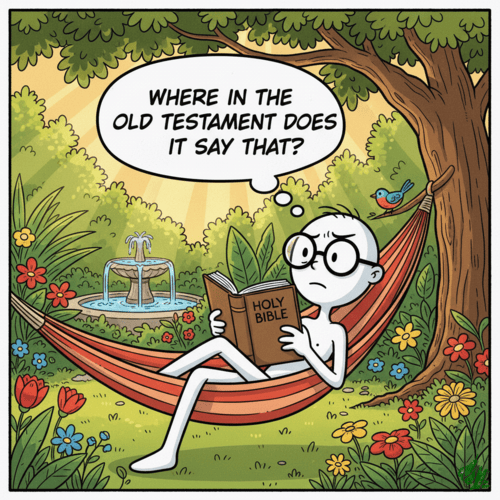Bible Quotations Aren’t Sloppy: Debunking Satan’s Lie
**This post is part of our series, Satan’s Lies: Common Deceptions in the Church Today.
On reading the New Testament, one runs into an occasional quotation that doesn’t quite seem to match an Old Testament passage. Satan often seizes such moments to whisper doubts: “See? The apostles were careless. They twisted Scripture to fit their agenda. How can you trust the Bible’s accuracy?”
The lie aims straight at Scripture’s inerrancy—if the inspired authors themselves quoted sloppily, how can we trust anything they wrote? But the accusation crumbles under careful examination. What critics call “sloppy” actually reveals divine sophistication spanning centuries. Let’s see how Bible quotations strengthen rather than undermine our confidence in God’s Word.
UNDERSTANDING HOW SCRIPTURE QUOTES SCRIPTURE
Before dismissing biblical quotations as errors, we must understand how ancient authors cited texts. They weren’t writing academic papers with footnotes. In the ancient world, capturing the meaning mattered more than word-for-word precision. More importantly, the Holy Spirit inspired both the original Old Testament and how New Testament authors applied it. The same divine Author orchestrated both Testaments, revealing how Israel’s story always pointed toward Christ.
Jesus Himself established this pattern. After His resurrection, He explained to His disciples “beginning with Moses and all the Prophets…what was said in all the Scriptures concerning himself” (Luke 24:27). The apostles weren’t inventing creative interpretations—they were following Christ’s own method of reading Scripture.
The Reformed tradition affirms “Scripture interprets Scripture.” When we let the Bible explain itself rather than imposing modern standards, these supposedly problematic quotations become windows into God’s redemptive plan.
FOUR “PROBLEMS” THAT AREN’T PROBLEMS AT ALL
Example 1: Typological Fulfillment—Jesus as the True Israel (Matthew 2:15/Hosea 11:1)
Typological fulfillment means earlier biblical events, people, or institutions serve as patterns that find their ultimate meaning in Christ. The original passage has its own historical meaning, but what if God designed it to foreshadow something greater?
Critics object: “Hosea said ‘Out of Egypt I called my son’ about Israel leaving Egypt under Moses. Matthew wrongly applies this to Jesus fleeing to Egypt as a child!”
But Matthew isn’t misreading Hosea—he’s revealing a deeper pattern. God called Israel His “son” (Exodus 4:22-23), but Israel repeatedly failed in faithfulness. Jesus, the perfect Israelite, succeeds where the nation stumbled. He relives Israel’s journey (including exile and return from Egypt) but does it rightly. Matthew isn’t forcing Hosea’s words; he’s showing how Jesus fulfils Israel’s calling. The same God who inspired Hosea embedded patterns in Israel’s history that would find their ultimate meaning in Christ.
Example 2: Contextual Adaptation—Rachel Weeping Across Centuries (Matthew 2:17-18/Jeremiah 31:15)
Contextual adaptation occurs when a New Testament writer applies an Old Testament passage to a new situation that shares the same theological pattern or principle, even though the historical circumstances differ.
Jeremiah pictured Rachel weeping as her descendants went into Babylonian exile. Matthew applies this to mothers weeping when Herod slaughtered Bethlehem’s children. Careless interpretation?
Not at all. Both passages depict covenant judgment bringing terrible grief. Matthew recognizes a recurring pattern: God’s people suffering under evil rulers, mothers mourning slaughtered children. Significantly, Jeremiah 31 immediately promises restoration and hope—which Matthew’s readers knew arrived through Jesus. Matthew isn’t distorting Jeremiah; he’s identifying how biblical patterns echo through history, all pointing to Christ as ultimate hope.
Example 3: Homiletical Interpretation—Paul’s Bold Application (Romans 10:6-8/Deuteronomy 30:12-14)
Homiletical interpretation means applying Scripture in a sermonic or teaching way that draws out theological implications and contemporary applications while remaining faithful to the text’s core message—similar to how a preacher applies an ancient text to today’s audience.
Paul seems to completely rewrite Moses! Deuteronomy talks about God’s commandments being near and accessible—not in distant heaven or across the sea. Paul applies this to Christ’s incarnation and resurrection.
But Paul hasn’t abandoned Moses’ meaning. Moses’ point was that God’s word isn’t impossibly far away—it’s near us, accessible. Paul reveals Christ is that accessible word made flesh. We don’t need to ascend to heaven (Christ came down) or cross the sea (He rose from the dead). Same principle Moses taught, but now Paul shows its ultimate fulfilment. The word of faith is near—embodied in Jesus. Paul isn’t twisting Scripture; he’s unveiling what the Spirit always intended.
Example 4: Textual Variant—Translation Under Inspiration (Hebrews 10:5/Psalm 40:6)
Textual variants refer to different wordings in various manuscripts or translations of Scripture. Sometimes New Testament authors quote from the Septuagint (the Greek translation of the Old Testament) rather than the Hebrew original, and these versions occasionally differ in wording while preserving the same meaning.
Here’s a textual puzzle: The Hebrew Psalm says “ears you have opened for me,” but Hebrews quotes it as “a body you prepared for me.” A mistake?
No—divine providence. Hebrews quotes from the Septuagint, the Greek Old Testament used by early Christians. The Septuagint translators, working centuries before Christ, rendered the Hebrew phrase interpretively: opened ears for obedience became a body prepared for obedient service. Both versions make the same theological point—God desires obedience, not mere sacrifices. The Holy Spirit superintended both the Hebrew original and its Greek translation, preparing the precise wording Hebrews would need to explain Christ’s incarnation. Far from sloppy, this shows God’s providence at work across centuries of Scripture transmission.
WHY THIS MATTERS
These examples aren’t problems requiring apologetic gymnastics—they’re evidence that one divine mind authored all Scripture. The unity between Testaments, despite centuries and different human authors, confirms rather than undermines the Bible’s reliability.
When we understand how Scripture interprets itself—with Christ as the key to understanding the Old Testament—these quotations become powerful. They show apostles faithfully following Jesus’ own interpretive method, guided by the same Spirit who inspired the original texts.
Satan’s lie whispers the Bible’s quotations reveal human carelessness. The truth? They reveal divine wisdom, weaving threads across centuries into one magnificent tapestry pointing to Christ. Trust the apostles. Trust the Spirit who guided them. Trust Scripture’s internal testimony to its own unity and reliability.
The Bible’s quotations aren’t sloppy. Rather, they’re examples of divine intent at work all along.
BIBLE QUOTATIONS AREN’T SLOPPY: RELATED FAQs
What about Acts 7:14, where Stephen says 75 people went to Egypt but Genesis 46:27 says 70? Stephen was quoting from the Septuagint (Greek Old Testament), which includes Joseph’s grandchildren in the count, while the Hebrew text counts only direct descendants. Both numbers are accurate depending on who you’re counting—it’s a difference in genealogical methodology, not an error. The Holy Spirit inspired Stephen to use the version his Greek-speaking audience would recognise, demonstrating God’s care for different communities of believers.
- Did Matthew make up the “Nazarene” prophecy since it’s not in the Old Testament (Matthew 2:23)? No—Matthew is doing something different here. Notice he says “what was said through the prophets” (plural), not “the prophet,” signaling he’s summarising a theme rather than quoting a verse. The word “Nazarene” connects to the Hebrew word “netzer” meaning “branch”—a messianic title in Isaiah 11:1, Jeremiah 23:5, and Zechariah 6:12. Additionally, since Nazareth was a despised, insignificant town (John 1:46), Jesus being from there fulfilled prophecies that the Messiah would be rejected and humble. Matthew isn’t inventing prophecy; he’s showing how Jesus’ unlikely hometown wrapped together multiple Old Testament predictions about a despised, branch-like Messiah.
- Why does Hebrews 11:21 say Jacob worshiped “leaning on his staff” when Genesis 47:31 says he bowed at the “head of his bed”? This is another Septuagint difference—the Hebrew word can mean either “staff” or “bed” depending on pronunciation (matteh vs mittah). The Septuagint translators chose “staff,” picturing the elderly patriarch using his staff for support while blessing Joseph’s sons. Both translations capture Jacob’s worshipful posture; Hebrews uses the Greek version familiar to its readers, and both convey the same reverent scene.
What do modern Reformed scholars say about these quotation issues? DA Carson and GK Beale have written extensively showing New Testament authors followed recognised Jewish interpretive methods while under divine inspiration—they weren’t making up rules. Beale’s Commentary on the New Testament Use of the Old Testament demonstrates that apostolic interpretation was both sophisticated and faithful to original contexts, revealing deeper Christological meanings God intended all along. These scholars show understanding ancient quotation practices dissolves supposed problems.
- How can Paul say “no eye has seen” is Scripture (1 Corinthians 2:9) when that exact phrase isn’t in the Old Testament? Paul is likely paraphrasing Isaiah 64:4 combined with Isaiah 65:17 and possibly other prophetic texts about God’s future glory. Ancient writers commonly conflated related passages into summary statements—it’s called “pearl-stringing.” Paul captures the essence of multiple Scripture passages about God’s incomprehensible blessings, which is a legitimate way to cite biblical truth that his audience would have recognised right away.
- Why does Mark 1:2-3 attribute a quotation to Isaiah when it’s actually mixing Malachi 3:1 and Isaiah 40:3? Mark introduces the combined quotation with “as it is written in Isaiah the prophet” because Isaiah provides the main quotation and major theme—the voice crying in the wilderness. Ancient writers regularly named the most prominent source when combining texts, and some manuscripts read “in the prophets” (plural) instead. Either way, Mark is following standard practice of weaving related prophecies together to show how multiple Old Testament threads converged in John the Baptist’s ministry.
If the apostles could interpret Old Testament passages in new ways, can we do the same today? No—the apostles wrote under the same divine inspiration that produced the original Old Testament, giving them unique authority to reveal Scripture’s ultimate meaning. We interpret Scripture by following the apostolic pattern they established, but we don’t have their inspired authority to create new interpretations. The Reformed principle is that Scripture interprets Scripture: we let the New Testament’s inspired interpretation guide how we read the Old Testament, rather than inventing our own creative applications.
BIBLE QUOTATIONS AREN’T SLOPPY: OUR RELATED POSTS
- Is the Bible’s Inerrancy Defensible At All?
- The Comma Johanneum: Does It Undermine Bible Reliability?
- Bible Allusions: How They Enrich Our Grasp of God’s Word
- The Study of Names: Surprising Support for Bible Reliability
- Ten Discoveries That Support New Testament Reliability
- Do Textual Variants Undermine Bible Reliability?
Editor's Pick

‘Out of Egypt I Called My Son’: Did Matthew Misuse Hosea 11:1?
When Matthew quotes Hosea 11:1 in his Gospel—“Out of Egypt I called my son”—he draws a connection that has puzzled [...]

Bible Allusions: How They Enrich Our Grasp of God’s Word
Ever experienced that moment when you're reading Scripture and suddenly recognise an echo of another passage? That spark of recognition [...]

Old Testament Theophanies: What Purposes Did They Serve?
Throughout the Old Testament, we encounter remarkable moments when God manifests Himself in visible, often tangible forms to His people. [...]

When Words Fail: How the Holy Spirit Helps Us in Our Prayers
Ever sat down to pray and found yourself at a complete loss for words? Or perhaps you’ve prayed diligently but [...]

Isaiah 64:6: How Are Our Righteous Deeds Like Filthy Rags?
“We have all become like one who is unclean, and all our righteous deeds are like a polluted garment.” — [...]

The Greatest Yet the Least: How Is John the Baptist Both?
In Matthew 11:11, Jesus makes a statement that has puzzled Bible readers: “Truly I tell you, among those born of [...]

The Pilgrim’s Progress: Journeying Through the Psalms of Ascent
The Psalms of Ascent (Psalms 120-134) are a remarkable collection of fifteen songs that have guided God's people for millennia. [...]

Not Home Yet: How Scripture’s Exile Theme Shapes Our Faith
When we read Scripture carefully, a striking pattern emerges: God’s people are almost always on the move, displaced, or living [...]

At Pentecost: God Fulfils Covenant and Reverses Babel
The scene is electrifying. Jerusalem, crowded with Jewish pilgrims from across the known world. A sound like rushing wind fills [...]

The Sun’s Age: Is It Really A Showstopper for A Young Earth?
When discussing creation and the age of the earth, sceptics often point to the sun as definitive evidence against the [...]
SUPPORT US:
Feel the Holy Spirit's gentle nudge to partner with us?
Donate Online:
Account Name: TRUTHS TO DIE FOR FOUNDATION
Account Number: 10243565459
Bank IFSC: IDFB0043391
Bank Name: IDFC FIRST BANK






